Salo is an animal product traditional for Slavic peoples. Ever more often rejected by the health food craze, salo does however have its positive sides - besides proven as tasty, salo conceals human health benefits that are not at all insignificant.
Salo is animal fat found under the skin of a pig or boar. There are different ways of preparing and storing it, the most popular and simplest being just salting it. Commonly used as an appetizer for wine, smoked salo, seasoned with various spices and garlic, is characterized by an excellent taste. There is also boiled and fried salo. Often, salo is eaten right along with the skin of the animal. In Canada, they have salo from the pork belly, smoked, seasoned with spices or covered with corn flour.
Salo is unpopular among southern peoples most likely because the climate conditions there contribute to its rapid spoiling. Salo is consumed all over the world in one form or another, the most popular kind being bacon. Bacon is even considered a part of the traditional English breakfast, accompanied by eggs. In western European countries, bacon is offered in thin strips, sometimes smoked and seasoned with spices.
Salo is among the fats vital for the human body - of the ones that melt at our body temperature - about 100°F (37°C). Salo has a biological activity 5 times higher than that of butter, meaning it is absorbed much better than it. Salo is also a starter product for cracklings and pork lard, more enemies of a thin waistline.
Composition of Salo

Salo is rich in nutrients, it contains enviable amounts of vitamins and amino acids. It is a source of vitamin F, which is important for the immune system. Not too long ago it was also found that salo contains arachidonic acid which belongs to the group of unsaturated fats, as well as being one of the essential fatty acids. This acid is part of the cell membrane and plays a part in cholesterol metabolism. Salo contains a lot of fatty acids and should not be eaten in excess. The cholesterol in salo is less than that found in cow's butter.
In salo's composition we find enviable amounts of vitamins В1, В2, В3, В4, В5, В6, В12, the fat-soluble vitamins A, D, E, carotene, as well as important minerals, such as sodium, potassium, phosphorous, magnesium, zinc and selenium. Many of the amino acids found in this animal fat are essential. The highest amounts of these are alanine, arginine, valine, glycine, proline, threonine, aspartic acid and glutamic acid. 3.5 oz (100 g) of salo contains 770 calories.
The cholesterol in salo can be healthy if about 1 oz (30 g) of the product are consumed per day. This is because the human body produces cholesterol actively if it is not found in the food.
If we were to consume small amounts of salo we would be able to hinder the body from producing too much cholesterol. In addition, salo is absorbed better than certain kinds of butter and especially margarine, which is practically not broken down by the body.
3.5 oz (100 g) of cooked pork salo contain: 626 total calories, 594 calories from fat, 66.1 g total fat, 79 mg cholesterol, 7.06 g proteins, 26.26 ml water, no carbohydrates, fiber or sugars.
Choosing and Storing Salo
To maintain the taste and quality of the salo, certain rules need to be met. First off - always choose white and fresh salo because yellowed salo is a sign that the fats in it have begun spoiling and turning rancid. The actual technique for storing salo has been bequeathed to us by our ancestors - it needs to be thoroughly salted and stored only in wooden containers.
Another way to store salo is by smoking. The 1st step is to wash the salo well and hang it up to dry in a ventilated area. The actual smoking process lasts until the salo gains a saturated yellow color. Finally it's time to add spices according to your taste - paprika, black pepper, savory, fenugreek and mashed garlic, the latter being a must.
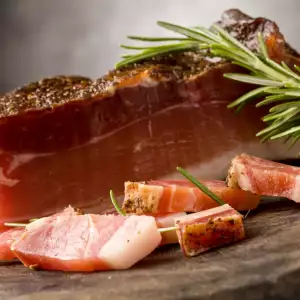
It's important to store the salo in a cool and ventilated area. The appetizer can last up to 3 days in the coldest part of the fridge without adding any additional salt. If you like you can freeze the salo for a period of no longer than 4 months. Freezing the product also allows it to retain a lot of the valuable nutrients as well.
Culinary Use of Salo
In Europe, salted and seasoned salo has been a traditional appetizer for wine since time immemorial. But experts recommend eating salo with whole-grain bread because that combination allows for the 2 products to be absorbed as efficiently as possible. You can combine salo with raw vegetables, seasoned with oil and natural vinegar.
When frying salo, it's important to do so briefly. Continued frying is a prerequisite for toxins and carcinogens forming in it.
If preparing fresh salo, you must always fry it briefly in drops of vegetable oil or butter. Traditionally, smoked salo is very suitable for dishes with lentils, beans and other legumes.
When adding smoked salo to dishes with lentils and sauerkraut, it is not necessary to fry it beforehand. If using salted salo, it's best to blanch it for a bit to get rid of that intrusive salty taste and only then use it for cooking. To do this, submerge the salty salo in a pot of cold water and put it on low heat until it is desalinated.
Benefits of Salo
Salo should not be ignored as a food product that is part of a balanced diet. When eaten in small quantities, salo with its abundance of unsaturated fatty acids helps cleanse the liver and remove the different carcinogenic buildups from the body. Its rich content of selenium is crucial for people suffering from a deficiency of this element.
The generous amount of vitamin F in this subcutaneous pork fat helps build new immune cells, which means that during the winter your body will be well protected against viruses and infections. This vitamin is also important as a prophylactic for atherosclerosis.
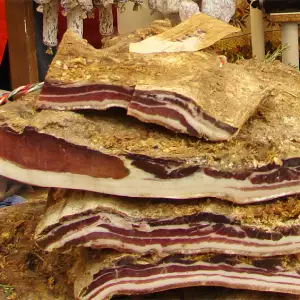
The arachidonic acid found in salo is needed by the heart muscle, without this acid the hormones cannot function correctly either. The valuable fatty acids in salo, essential for the human body, are about 10%, again beating butter. As already stated, the biological activity of salo is up to 5 times higher than that of butter.
For ages upon ages, salo has been used in folk medicine as well, mostly as a topical treatment for joint pains, mastitis, toothache, to alleviate joint movement issues after trauma and to aid against wet eczema and more. For gallbladder malfunction, often doctors recommend regularly consuming small amounts of salo. In addition, if you dream of salo, this is considered a good sign and portent of wealth and health.
Dangers of Salo
Do keep in mind that the saturated fats in salo are a lot. This leads to typical health problems, if you love eating salo. In such cases, metabolism imbalance, risk of atherosclerosis and heart diseases in general may occur. Excessive consumption of fats, even if they are easily digestible, leads to weight gain.
If you lead a sedentary lifestyle, even 0.35 oz (10 g) of salo per day can cause more harm than good. The high levels of cholesterol lead to undesirable issues, such as heart attack and stroke. Another downside is that most salo is sold highly salted.
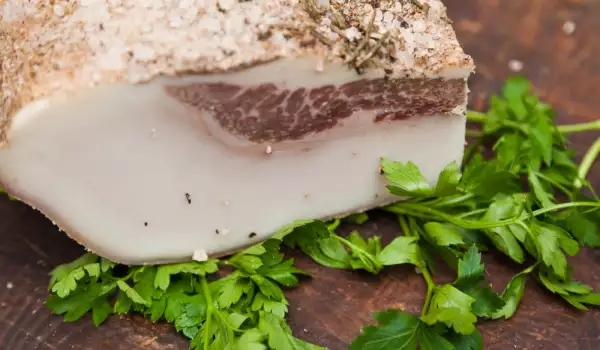




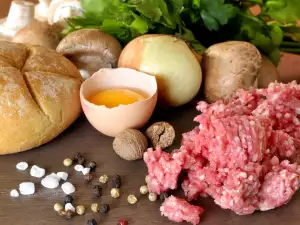
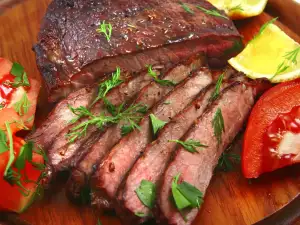








Comments